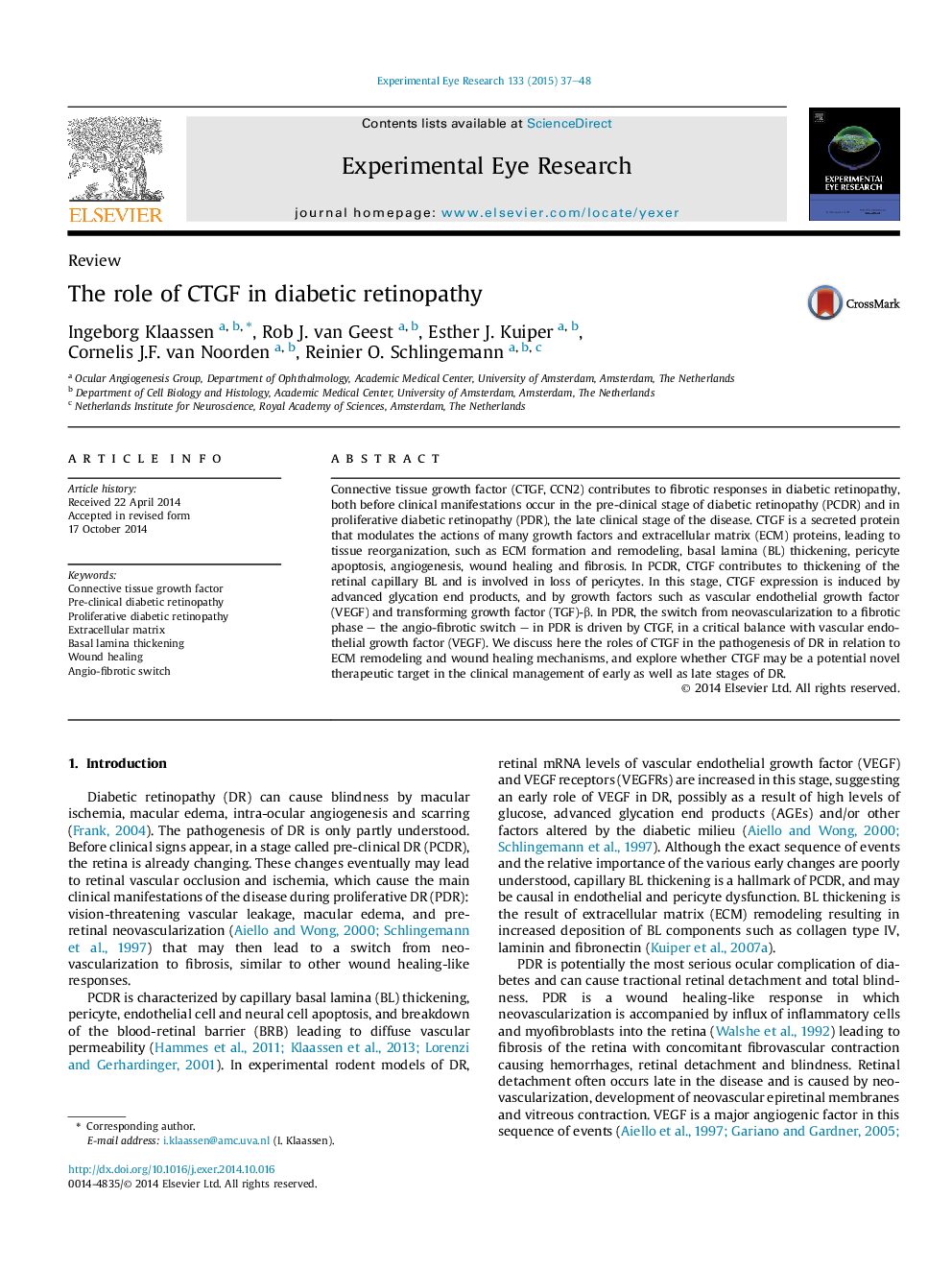| Article ID | Journal | Published Year | Pages | File Type |
|---|---|---|---|---|
| 6196664 | Experimental Eye Research | 2015 | 12 Pages |
â¢CTGF contributes to thickening of the retinal capillary basal lamina in PCDR.â¢CTGF is involved in loss of pericytes in PCDR.â¢The angio-fibrotic switch in PDR is driven by CTGF, in a critical balance with VEGF.â¢Targeting both CTGF and VEGF is a possible novel therapeutic option to prevent fibrosis in PDR.
Connective tissue growth factor (CTGF, CCN2) contributes to fibrotic responses in diabetic retinopathy, both before clinical manifestations occur in the pre-clinical stage of diabetic retinopathy (PCDR) and in proliferative diabetic retinopathy (PDR), the late clinical stage of the disease. CTGF is a secreted protein that modulates the actions of many growth factors and extracellular matrix (ECM) proteins, leading to tissue reorganization, such as ECM formation and remodeling, basal lamina (BL) thickening, pericyte apoptosis, angiogenesis, wound healing and fibrosis. In PCDR, CTGF contributes to thickening of the retinal capillary BL and is involved in loss of pericytes. In this stage, CTGF expression is induced by advanced glycation end products, and by growth factors such as vascular endothelial growth factor (VEGF) and transforming growth factor (TGF)-β. In PDR, the switch from neovascularization to a fibrotic phase - the angio-fibrotic switch - in PDR is driven by CTGF, in a critical balance with vascular endothelial growth factor (VEGF). We discuss here the roles of CTGF in the pathogenesis of DR in relation to ECM remodeling and wound healing mechanisms, and explore whether CTGF may be a potential novel therapeutic target in the clinical management of early as well as late stages of DR.
